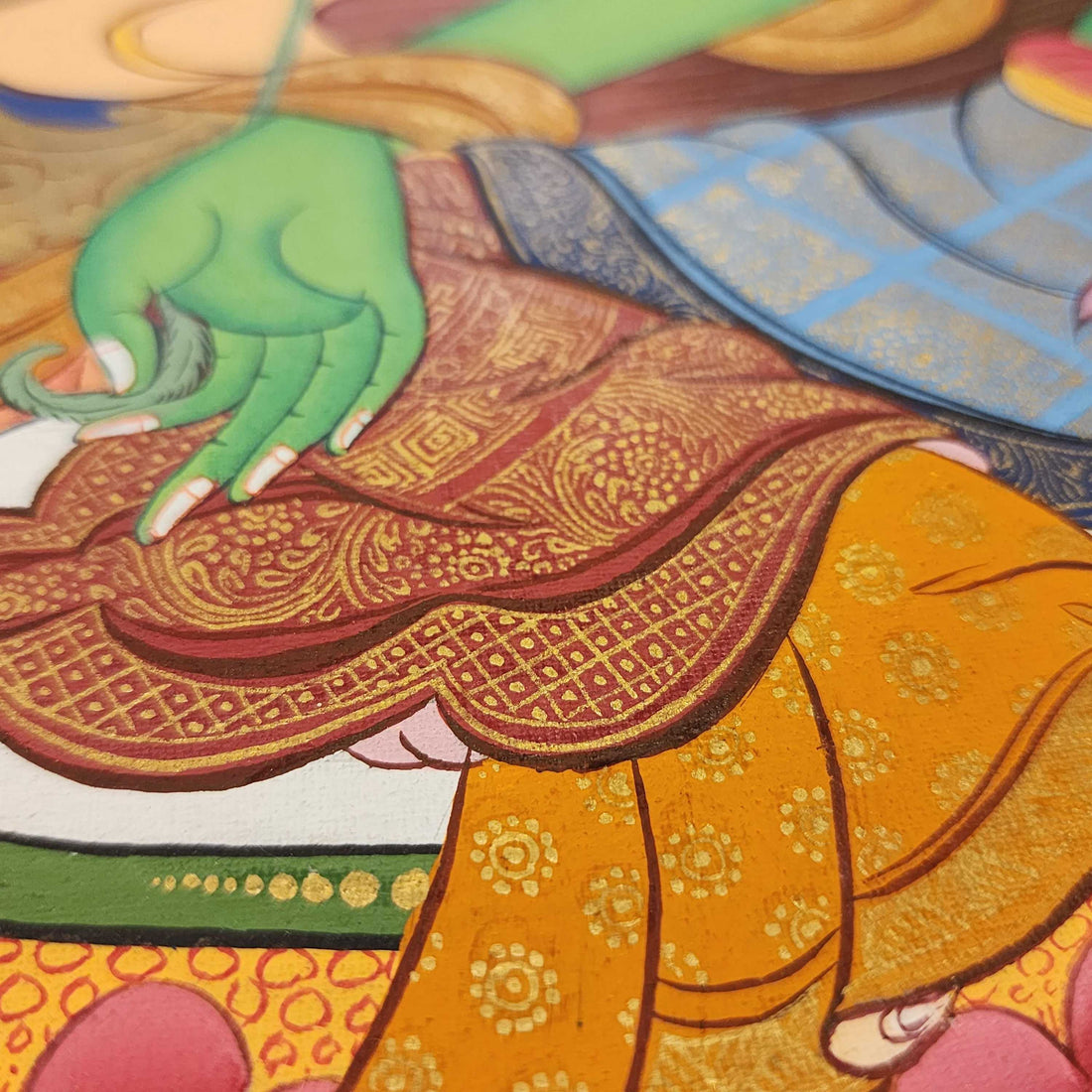
How Thangkas Are Used in Meditation and Visualization Practices
Share
Introduction
Thangka paintings are more than sacred art. They are tools for meditation and visualization in Tibetan Buddhism. Practitioners use them to focus the mind, develop compassion, and connect with enlightened beings.
Visualizing the Deity
— Practitioners focus on the central figure (e.g., Buddha, Tara, Chenrezig).
— Visualization helps internalize the qualities of the deity which are compassion, wisdom, or protection.
Mandala Meditation
— Some Thangkas depict mandalas cosmic diagrams representing the universe.
— Meditators imagine entering the mandala, symbolizing the journey toward enlightenment.
Developing Mindfulness and Focus
— The intricate details of a Thangka train the eye and mind to remain attentive.
— Observing patterns and colors cultivates deep concentration.
Empowerment Rituals
— Before use, many Thangkas are consecrated by lamas or monks.
— This imbues the artwork with blessings, making meditation more spiritually potent.
Supporting Daily Practice
— Hanging a Thangka in a meditation space creates a sacred atmosphere.
—Practitioners may recite mantras or prayers in front of the artwork.
Conclusion
Thangkas are powerful meditation aids, guiding practitioners toward inner peace and spiritual growth. They transform a simple image into a profound journey toward enlightenment.
